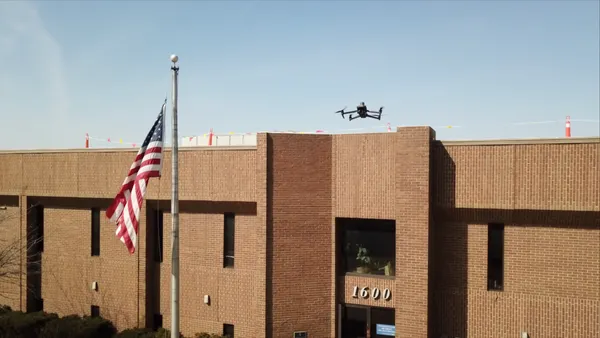Charge!
You thought micro mobility exploded overnight. “Hold my beer” said charging infrastructure companies. The ‘charge’ (pun intended) seems to be on for charge point infrastructure providers to grow and install as fast as contracts can be signed. For context about the growth potential, the Biden administration has set a goal of building a national public charging network of 500,000 EVSE ports by 2030. To meet this goal by 2030, approximately 12,390 public EVSE port installations will need to be deployed each quarter for the next 8 years, requiring a significant increase from the 4,674 public EVSE ports that have been installed each quarter, on average, since the start of 2020. (afdc.energy.gov)
Why now
Some might argue that charging companies are solving a problem that doesn’t exist. While this may be true based on the number of EVs being driven, the fact is that the funding is available after the passing of the Bipartisan Infrastructure Law (Infrastructure Investment and Jobs Act) to create a network of charge points across our major motorways. Said to be a once-in-a- generation investment in the nation’s infrastructure, the infrastructure bill gives states direct access to funding for EV charging infrastructure for state and local government agencies through NEVI formula funding. Approximately $5 billion in funding is available to help build EV chargers covering approximately 75,000 miles of highways.
Who are the chargers
There are several charging companies that are aggressively pursuing contracts and permits to install charging infrastructure. While there are many other companies taking part in this space, the top five depending on you want to measure them are Electrify America (VW of America), Tesla, EVgo, ChargePoint and Blink. For the most part these companies are installing Level 2 and 3 chargers depending on location and use case. These companies frequently partner with gas stations, grocery stores, big box retailers and high traffic shopping areas where they install their chargers. And now, many of those companies will be contracting with state governments to install highway charging networks.
The Federal Government wants the focus to be on Level 3 or ‘fast chargers’ that can charge an EV battery in minutes rather than hours. There appears to be healthy competition in this space today and expect there to be other charging companies jumping in to compete for some of the $7.5 billion available over the next five years to install infrastructure along highways and urban areas.
There are other avenues and funding available to expand EV charging infrastructure. Recently BP Pulse and Hertz announced a partnership to install fast chargers at Hertz locations (primarily at airports) across the U.S. This is to be partially funded by a $2 million grant from the California Energy Commission. Charging will be available to Hertz EV customers, ride-share drivers and even the general public.
This is just the beginning. There will be other players entering this space to take advantage of the once-in-a-generation funding of infrastructure. Highways and major travel routes will be a priority but not to be left behind, highly populated cities and dense urban areas will also join the race to electrify streets and parking areas to encourage the adoption of EV’s. The potential for unwanted problems and unforeseen challenges is always high when technology moves quickly, so exists the need for rules and reporting.
What are the rules
There are some expectations and requirements that charging operators need to abide by in order to use federal funding. For example, states must ensure that chargers are operational on average 97% of the time. If you think about the number of EVs on the road using these stations (very small), many of these stations go unused for long periods of time. This means that the data available is not necessarily a great reflection of the true performance of chargers. Much like a gas station today, you expect there to be gas available 100% of the time. “We must build a national charging network that makes finding a charge as easy as filling up at a gas station,” Secretary of Transportation Pete Buttigieg said. “These new ground rules will help create a network of EV chargers across the country that are convenient, affordable, reliable and accessible” he went on to say in a statement.
In addition, the DOT’s proposal lays out requirements for all stations in the network to communicate and operate on the same software platforms, with data submittal requirements to help create a public EV charging database. There are also network connectivity requirements to allow remote monitoring.
Clearly there is a lot of enthusiasm behind EV charging infrastructure and the electrification of mobility, as there should be. It can’t come fast enough!
How can data help manage the arrival and performance of charging infrastructure
Much like data has helped officials manage micro mobility over the last several years, data can help officials manage and monitor charging infrastructure and the expected performance of this equipment and its operators. Any rollout or expansion of charging infrastructure requires data collection, analysis and transparency to create an effective network.
Data sharing is a requirement of charging operators who obtain funding through the NEVI program. That’s the good news. What may be lacking is a clear vision or process to collect and share this data in a transparent way which can be analyzed and reviewed by administrators. Effective monitoring of a robust charging network requires a robust data platform that can efficiently aggregate and analyze key performance indicators in real or near real time.
Enter data aggregation expert Blue Systems
Blue Systems, a smart mobility company and part of global logistics and electric battery giant the Bollore Group, stands ready to provide their services to government agencies and operators. The Bollore Group has a long history as a manufacturer of EV batteries, a global EV car sharing operator and a smart mobility data aggregation company through its subsidiary Blue Systems. Over the last several years Blue Systems has been a leader in the field of data aggregation with a focus on mobility and parking operators in the U.S. and Europe.
When asked about the challenges associated with a quickly expanding charging infrastructure across the U.S., Vice President of Business Development James Delgado said “It’s very exciting to see investment in the electrification of infrastructure across the U.S., however with such rapid expansion sometimes comes unforeseen challenges and unwanted results. In our experience there are challenges that require the ability to ingest and analyze data sets outside of what the actual chargers provide.” Blue Systems, under the Bollore Group, has a lengthy track record of aggregating EV charger data and providing performance insights to a variety of stakeholders. Additionally, their software platform is capable of aggregating data from sensors including parking meters, road sensors and camera sensors. Delgado added, “there is valuable data that can be gathered from camera sensors about what type of vehicles, for example, are occupying a charging space. This can be extremely valuable information as stakeholders look at utilization data from charging infrastructure”.
Currently data sharing rests with the operators and can vary depending on the sophistication of the operator. Operators will be required to share data via a recognized data standard such as OCPP. Administrators will then attempt to monitor performance of operators through the data they receive from each operator. Delgado shared that “unforeseen technical challenges typically occur with data flowing from operators”. Blue Systems has developed capabilities that minimize data related issues and allows stakeholders to see quality data in real or near real time.
State and local city officials interested in learning more about how Blue Systems can help with defining service level agreements as part of RFPs or how data can be used to effectively monitor and manage networks of charge points should make contact with Blue Systems at [email protected].










